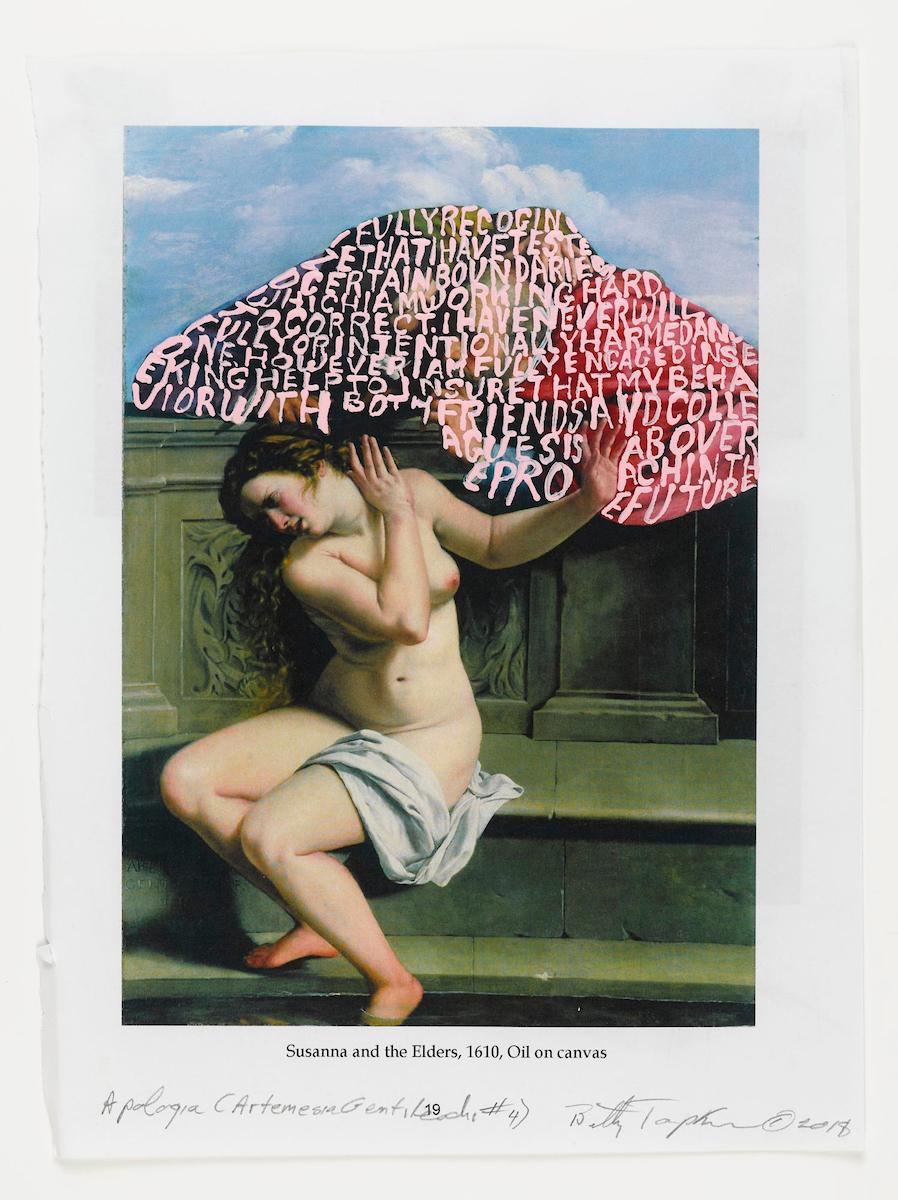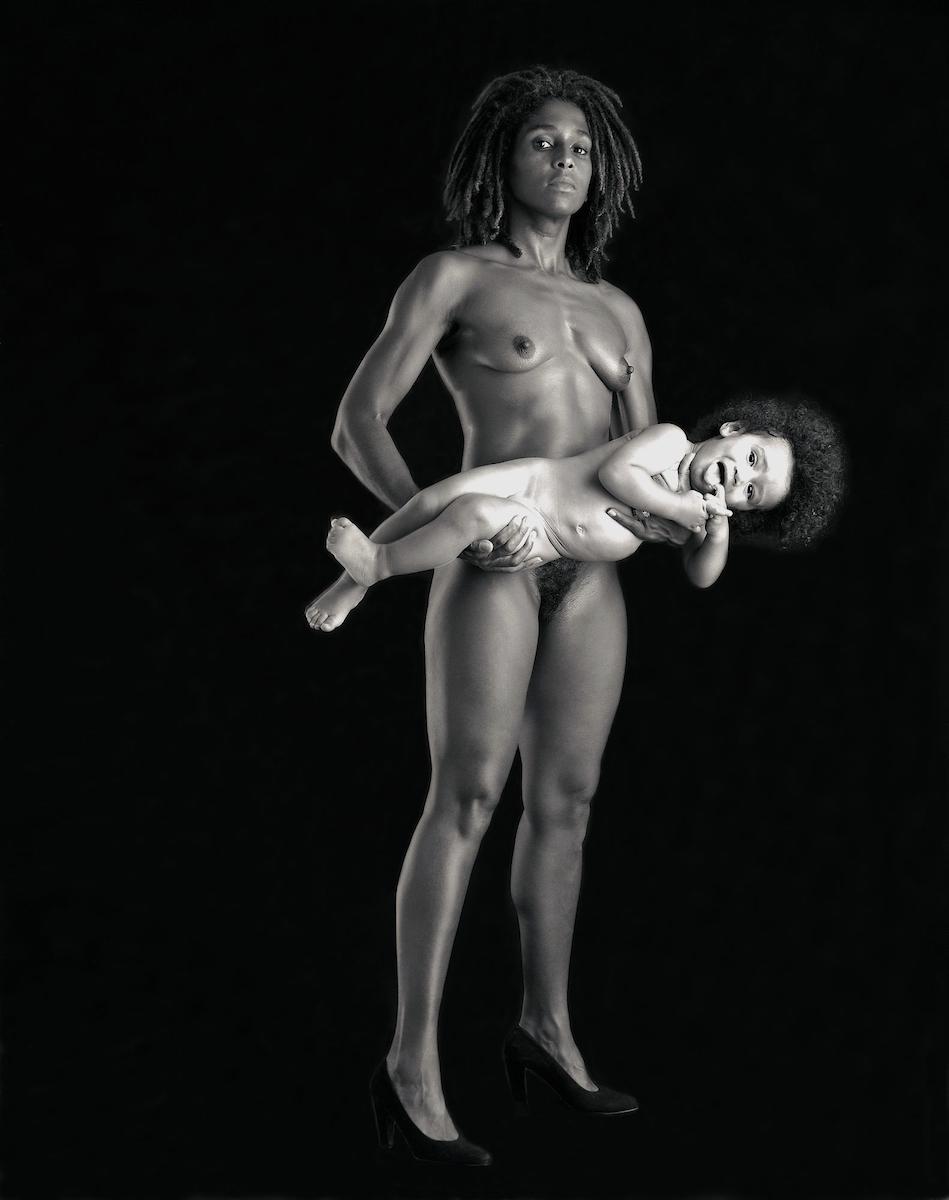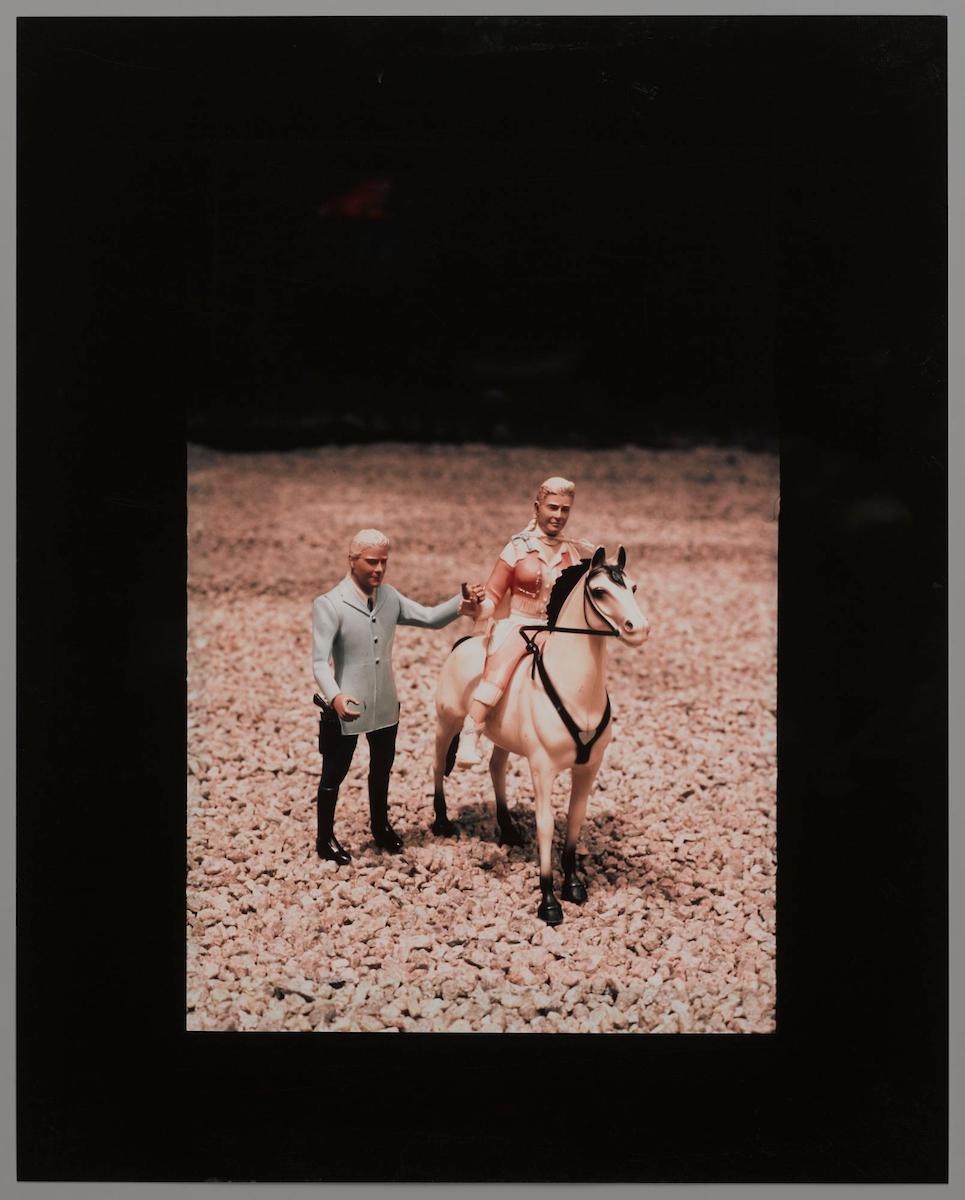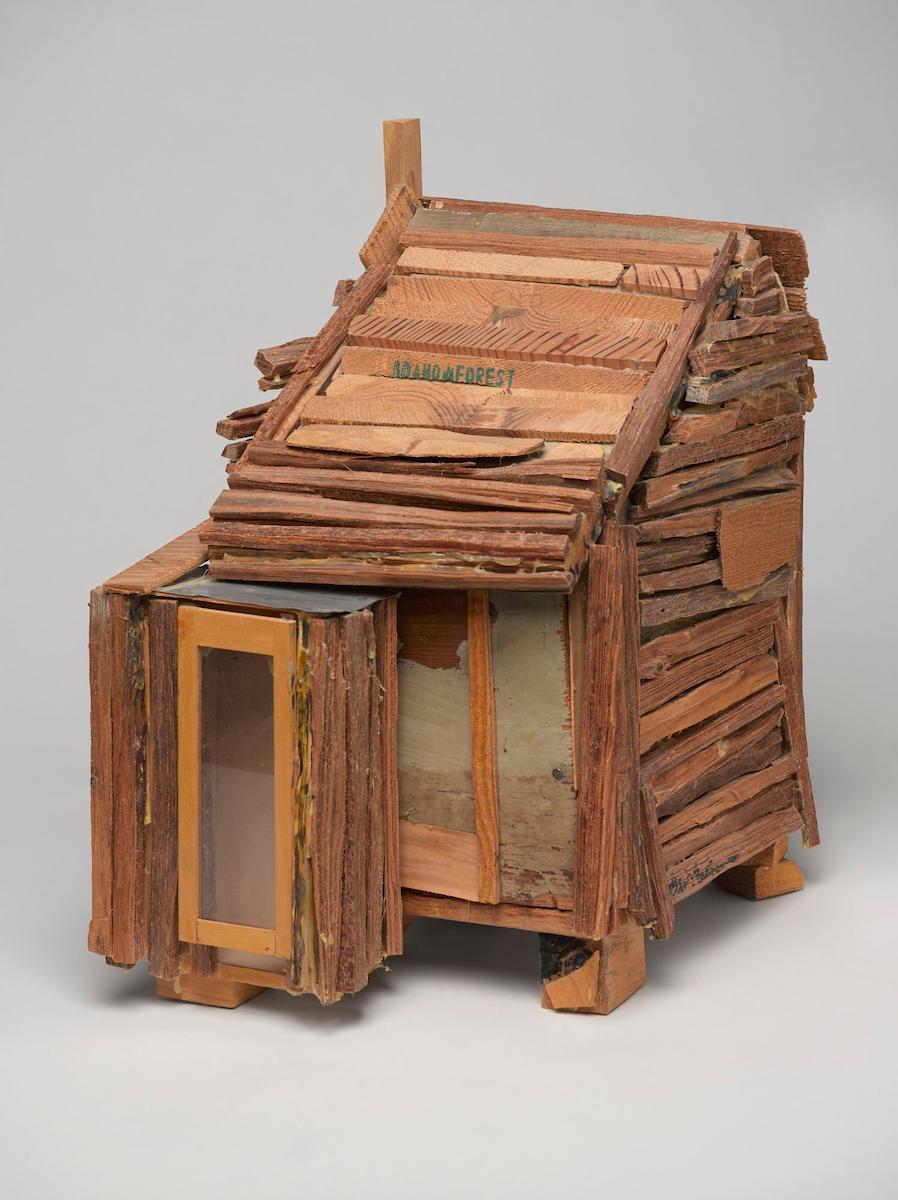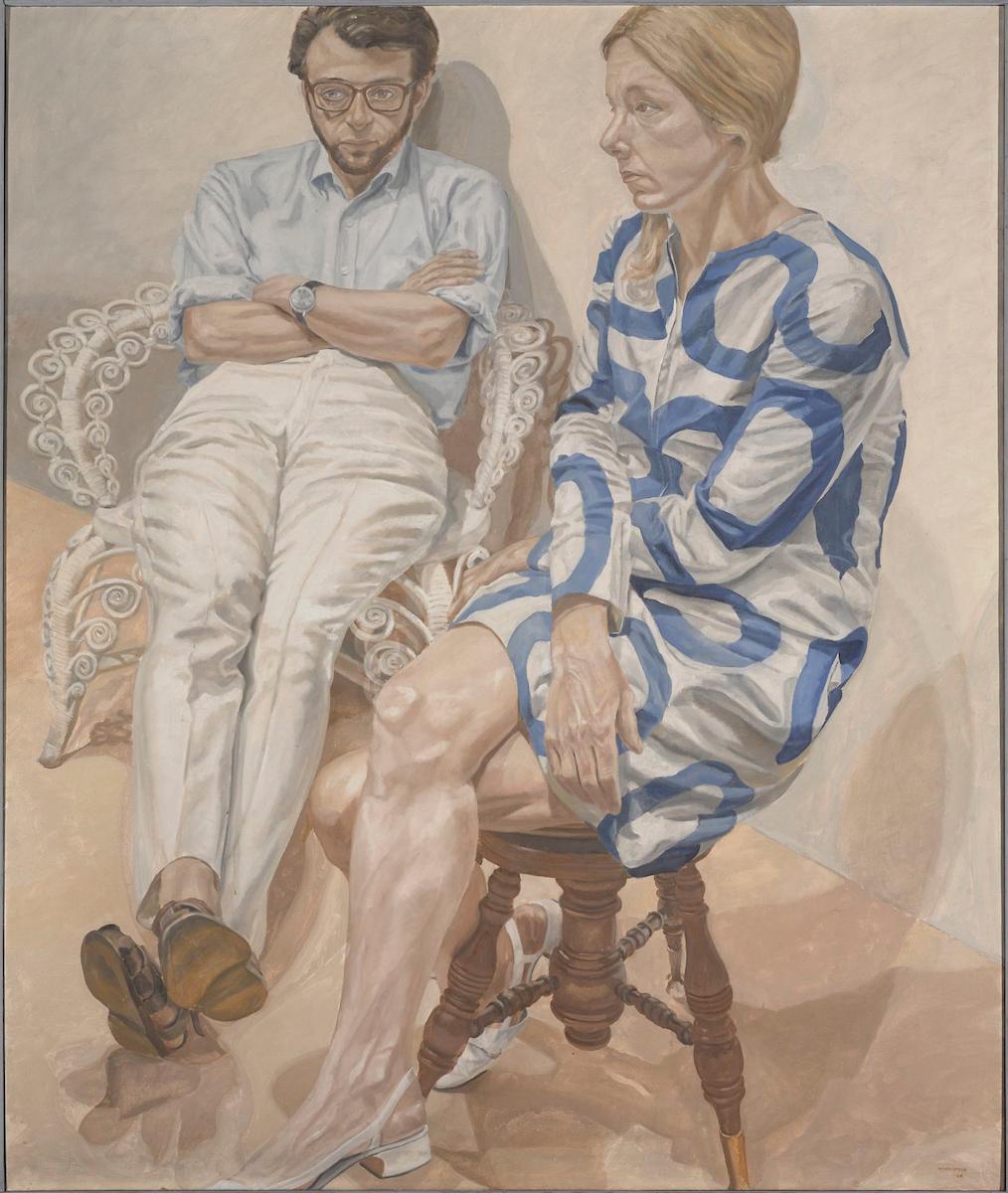Many new acquisitions will be exhibited for the first time, including two of Beverly Buchanan’s well-known series of shack sculptures; Betty Tompkins’s Fuck Painting #6 (1973)—the first American viewing of this controversial series; and Nona Faustine’s Isabelle, Lefferts House, Brooklyn (2016), which shows the topless artist, wearing a white skirt with a belt of baby shoes, holding a cast iron skillet in front of the Lefferts homestead, a historic colonial farmhouse built by slaveholders.
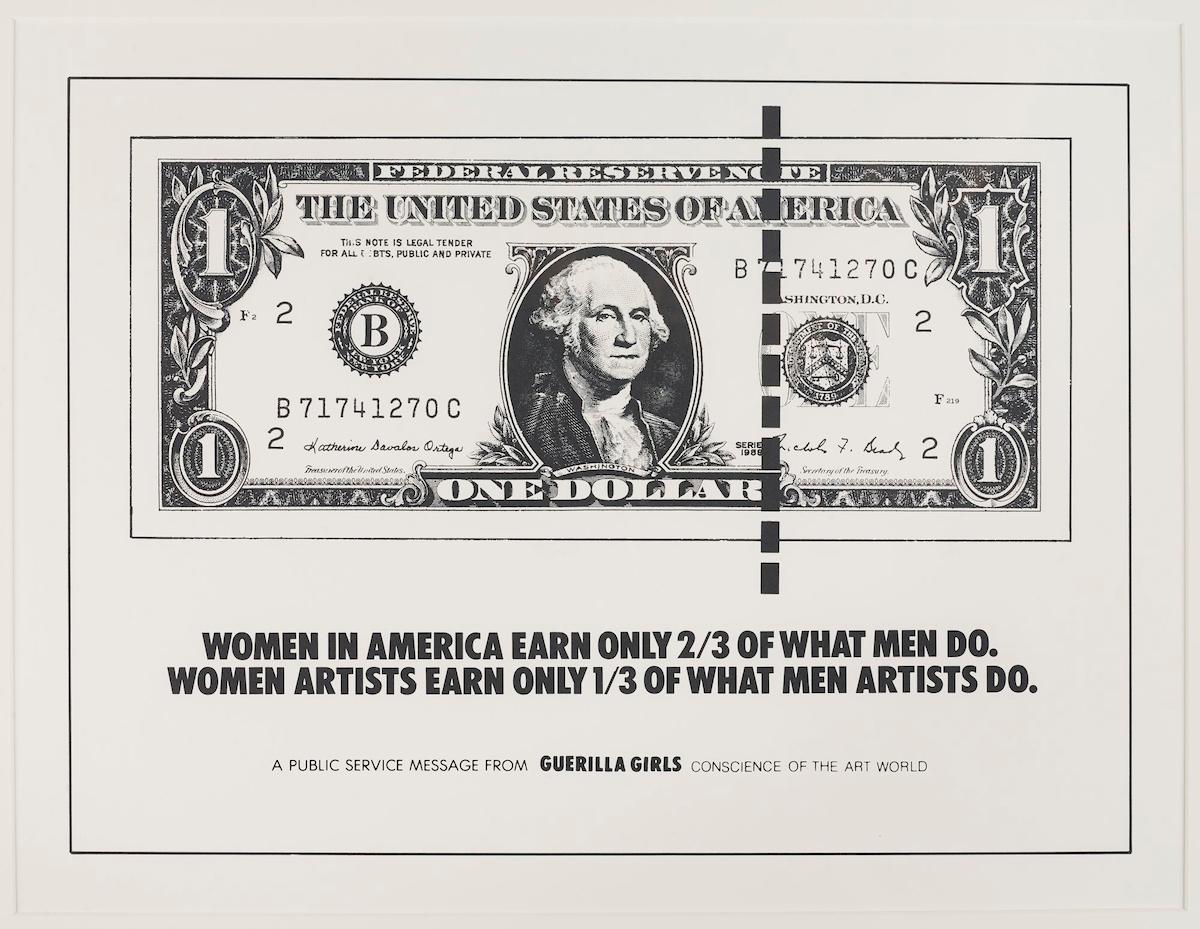
Guerrilla Girls (established New York City, New York, 1985). Women in America Earn Only 2/3 of What Men Do., 1985. Brooklyn Museum; Elizabeth A. Sackler Center for Feminist Art, Gift of Guerrilla Girls BroadBand, Inc., 2017.26.6.
Inspired by a 1989 Guerrilla Girls poster stating, “You’re seeing less than half the picture without the vision of women artists and artists of color,” a new exhibition at the Brooklyn Museum helps viewers get woke. It examines major works, new acquisitions, and rediscoveries in the Museum’s collection through an intersectional feminist lens. Half the Picture: A Feminist Look at the Collection highlights over fifty artists who use their art to advocate for race, gender, and class equality. Tracing feminist art over the last century, the exhibition features compelling, thought-provoking work ranging from World War I to the Civil Rights Movement and #MeToo. “Half the Picture explores how artists get the rest of us to pay attention,” says organizer Catherine Morris, Sackler Senior Curator.
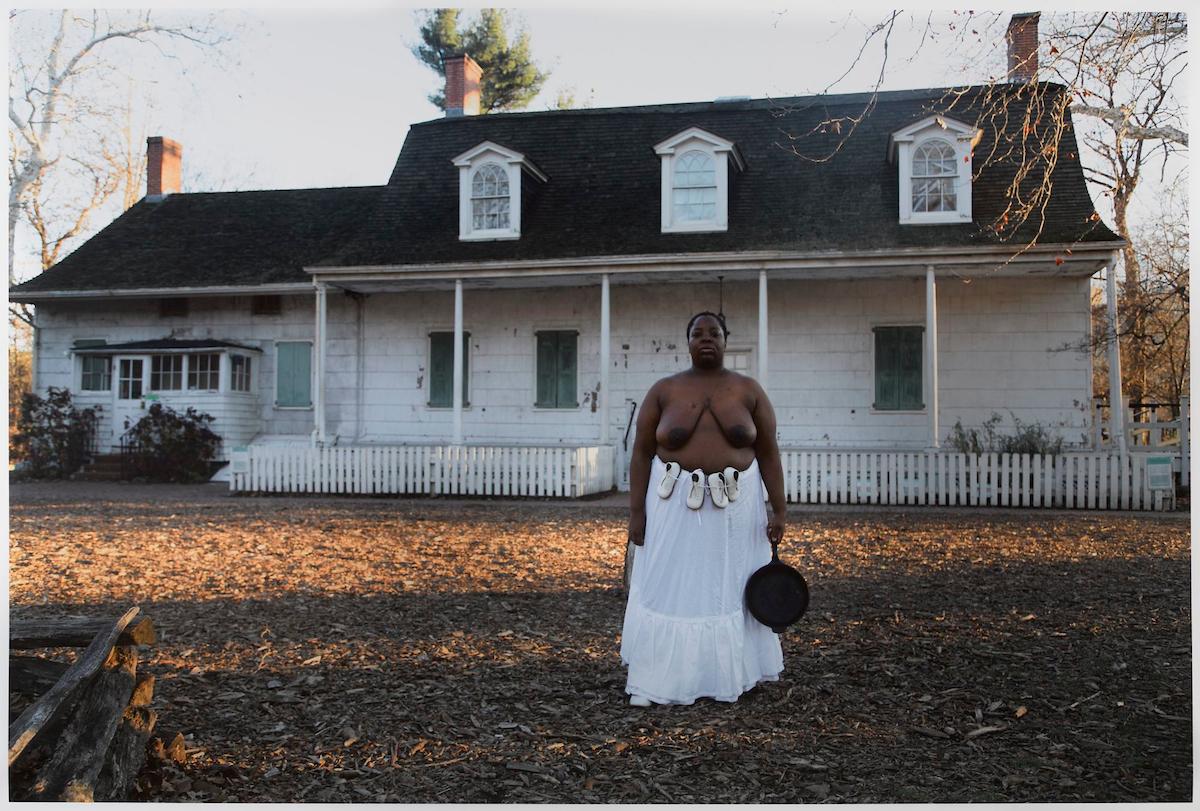
Nona Faustine (born New York City, New York, 1977). Isabelle, Lefferts House, Brooklyn, 2016. Brooklyn Museum; Winthrop Miles Fund, 2017.41.2.
Exhibition highlights also include Renee Cox’s provocative photograph Yo Mama (1993); Dara Birnbaum’s iconic video Technology/Transformation: Wonder Woman (1978/79); and Wendy Red Star’s 1880 Crow Peace Delegation series, featuring historical photographs covered with notes in red ink about cultural appropriation, contrasting Native American reality with their depiction in popular culture.
Half the Picture: A Feminist Look at the Collection is on view through March 31, 2019.




